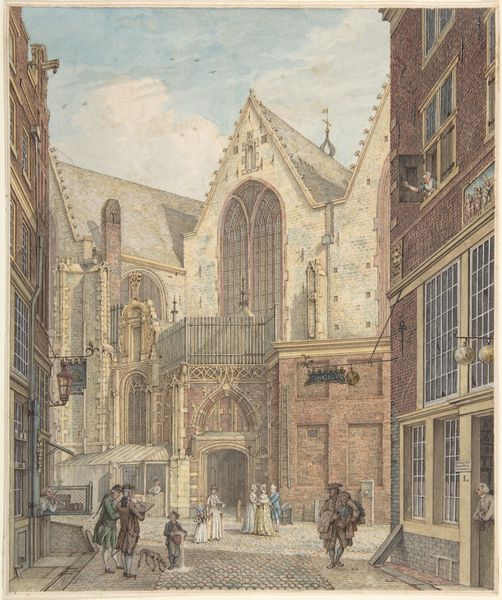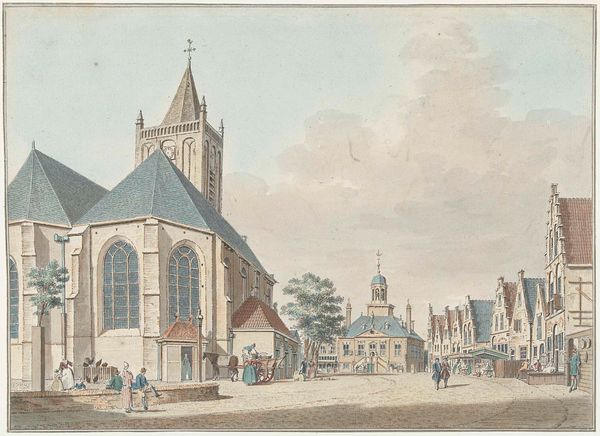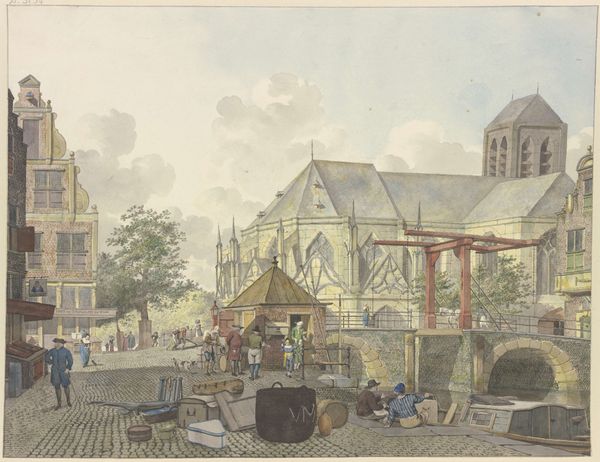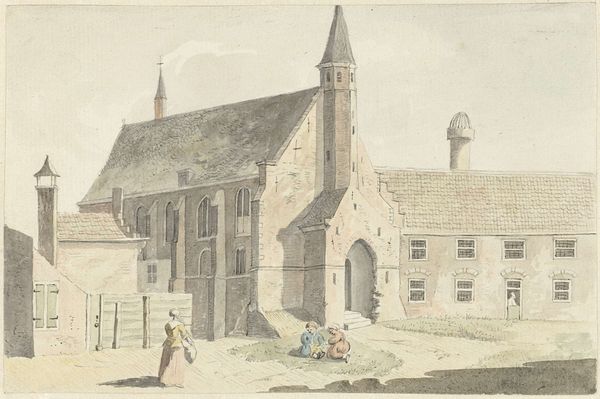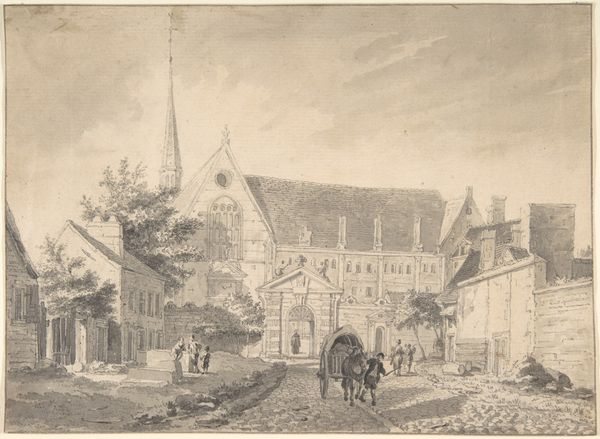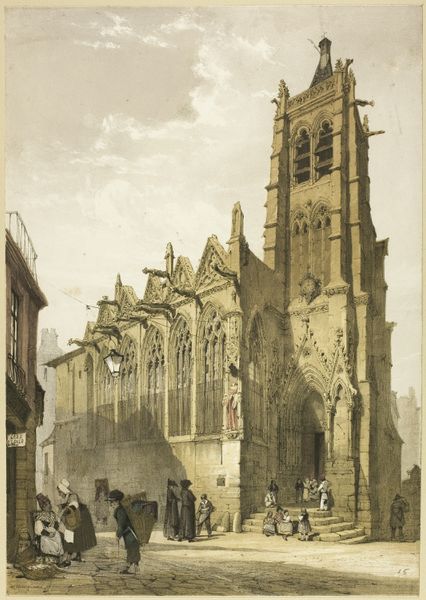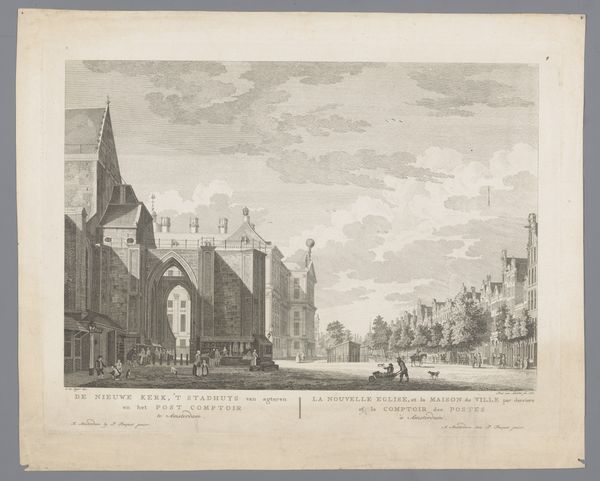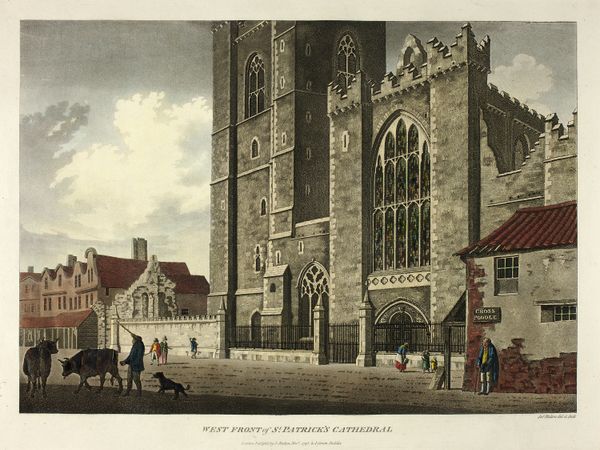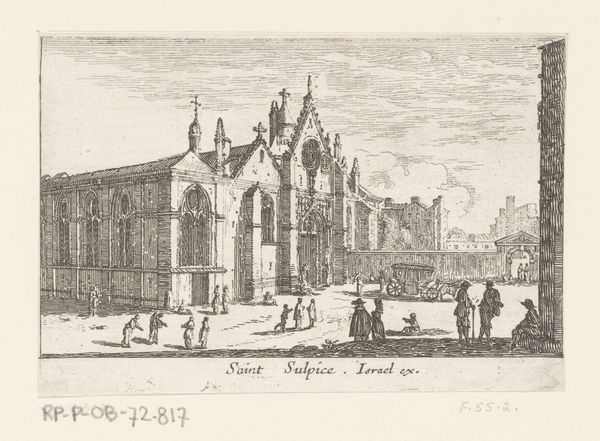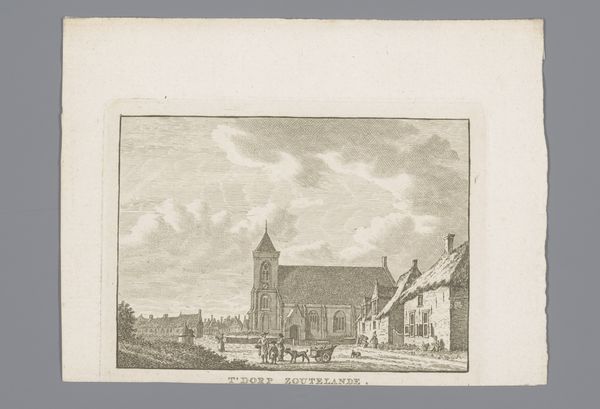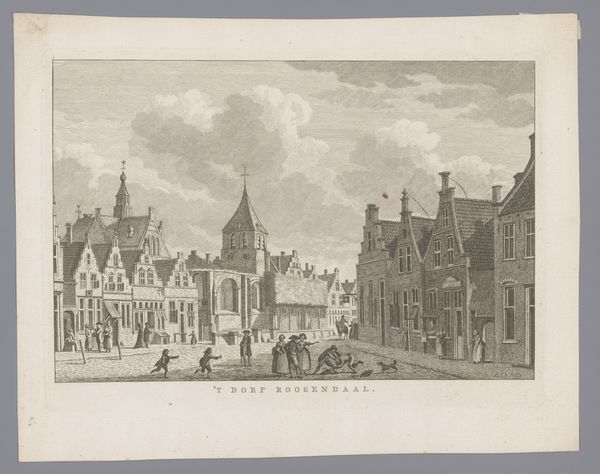
Kirche bei einer Brücke, ein lahmer Bettler bei einer Dame 1797
0:00
0:00
drawing, coloured-pencil, painting, gouache, paper, watercolor
#
drawing
#
coloured-pencil
#
painting
#
gouache
#
landscape
#
paper
#
watercolor
#
coloured pencil
#
romanticism
#
15_18th-century
#
cityscape
#
genre-painting
#
watercolor
Copyright: Public Domain
Editor: So, here we have "Church by a Bridge, with a Lame Beggar by a Lady," a watercolor, gouache, and colored pencil drawing on paper created around 1797 by Johannes Huibert Prins. The subdued colors give it a somber feel, and the composition, with the stark architecture of the church dominating the scene, creates a certain gravity. What strikes you about this piece? Curator: Note the precision of line, the careful articulation of each cobblestone. Consider how Prins uses these meticulous details to build up a complete, yet idealized, image of urban space. He has carefully positioned the building on a diagonal, to examine not the object but its structural form from every angle. Editor: I see what you mean. The church isn’t just *there*; it’s deliberately presented. What about the figures? How do they contribute to the composition? Curator: They provide a scale and a narrative, certainly. However, observe how the artist treats them. These elements of the figures and city do more than fill out a picturesque scene; it's through careful interplay that these objects come into play. Their colors correspond to the overall structure of the building but at different contrasting tonalities of hues in its spatial domain. Editor: So, the artist isn’t just capturing a scene, but constructing a visual experience, a world? Curator: Precisely. Prins presents a constructed visual world that engages through its formal order rather than social commentary. Editor: That’s a helpful distinction. I was initially drawn to the figures but now I see how integral the architectural form of the church is, not only from a thematic lens, but also through the construction of color, lines, shape, light, and space, is the spatial composition of the church. Curator: I am pleased you noted this as well, in conclusion.
Comments
No comments
Be the first to comment and join the conversation on the ultimate creative platform.
